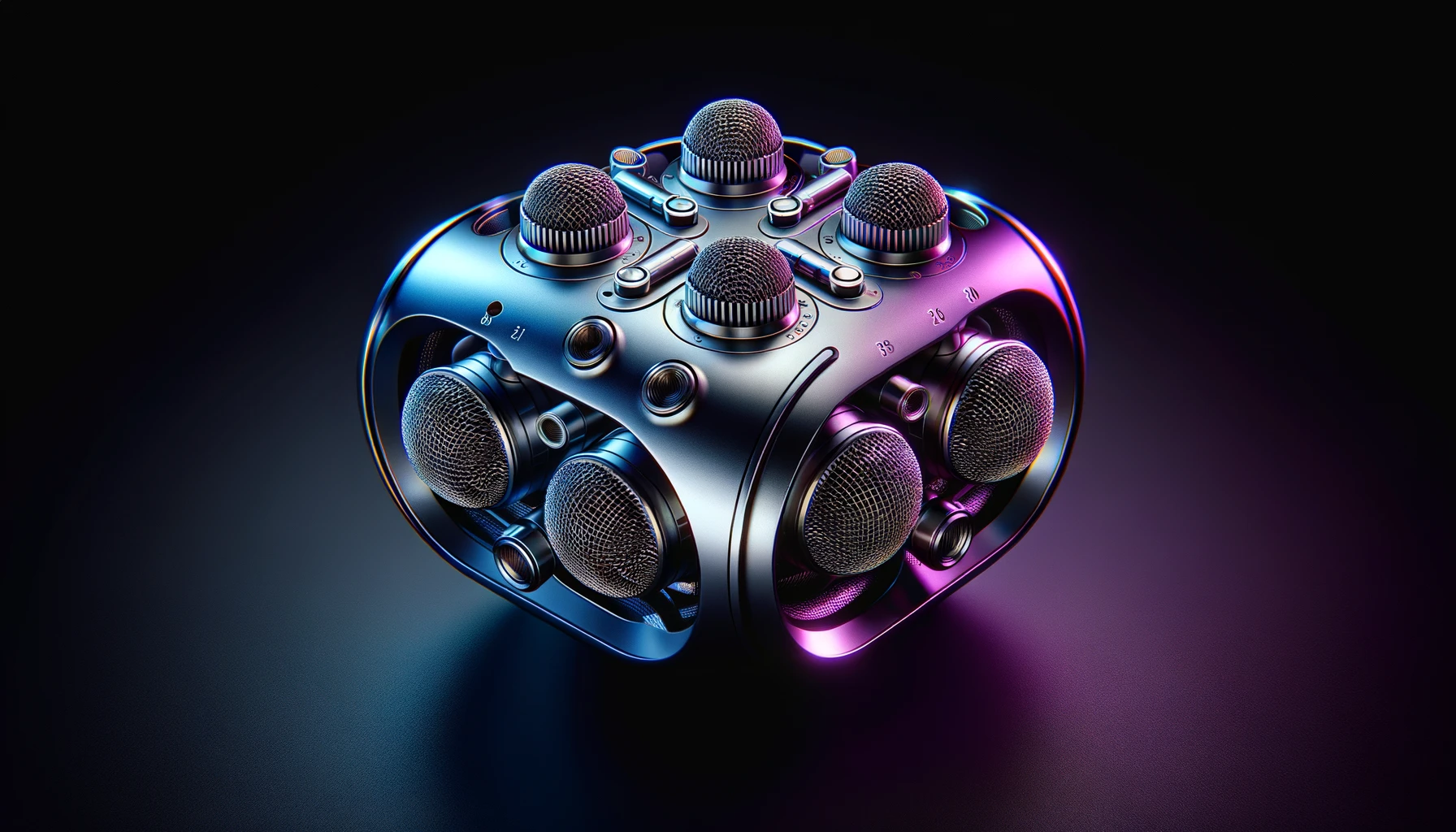
From a specialized hobby to a media juggernaut, podcasting is breaking new ground with immersive technologies like ambisonic audio.
This emerging tech offers a spherical, surround sound experience, adding new layers of creativity to audio content.
However, it comes with its own set of production challenges.
In this detailed guide, we’ll examine both the exciting potential and current roadblocks of using ambisonic audio in podcasting
What is Ambisonic Audio?
Put simply, it’s a recording technique that uses specialized microphones to capture sound in a 360-degree, 3D space rather than a fixed stereo field.
This allows content creators to deliver a deeply immersive listening experience, with sounds coming at listeners from all directions to make them feel enveloped within the audio environment.
The Creative Promise of Ambisonic Audio In Podcasting
For podcasters, thoughtfully incorporating ambisonic audio elements can add thrilling new layers to their shows. Let’s look at some of the biggest creative opportunities:
Transportive Storytelling Environments
Fiction podcasts, especially in immersive genres like sci-fi and horror, could allow listeners to become engrossed in fantastical imaginary worlds.
Surround sound makes these environments feel tangible. For example, a fantasy podcast could use ambisonic audio to place the listener at the center of an epic battle scene, with sword clashes and explosions coming from all directions.
Vivid Travel and Nature Soundscapes
For travel shows or podcasts exploring the natural world, ambisonic recordings can capture busy marketplaces, calm beaches, or lush forests with incredible realism.
Listeners will feel transported, surrounded by the evocative sounds. Imagine hearing migrating birds swirling around your head in a nature podcast recorded with an ambisonic mic.
Interactive Live Show Experiences
At live podcasting events, ambisonic technology can uniquely immerse remote audiences in the energy and atmosphere of the room.
People online can feel like they’re really there amidst the cheers and laughter. It’s more communal and engaging than standard audio.
Engaging Educational Content
Learning-based podcasts on topics like science, languages, or history could also benefit enormously from ambisonic elements.
Imagine vocabulary lessons or historical scenes enriched with immersive directional sounds that boost information retention and listener focus.
Next-Level Music Analysis
For music podcasts, ambisonic audio recording allows intricate analysis of song structures and layers. People can get inside tracks, experiencing each individual component in a surround soundscape.
It’s like an immersive concert in your headphones.
The Allure of High-Quality Sound for Guests
One often overlooked advantage of investing in ambisonic sound is its potential to attract high-caliber guests to your podcast. When potential guests know they will be featured in an episode that employs cutting-edge audio technology, it not only enhances their personal brand but also ensures their message is conveyed with the depth and nuance it deserves.
This commitment to quality can make your podcast a preferred choice for thought leaders, industry experts, and influential personalities.
Memorable Interactive Audiobooks
Audiobook creators could use ambisonic audio strategically to make key scenes or turning points more engaging.
For example, enhance an intense audiobook moment by placing the listener at the heart of the action.
As these examples show, ambisonic recording can open creative doors for podcasters. But to maximize the impact, strategic implementation is crucial.

An AI Generated Ambisonic Microphone Concept
Realizing Ambisonic Audio’s Full Potential
While simply incorporating ambisonic mics can boost immersion, creators can further enhance their shows by:
- Collaborating with sound engineers to craft the ambisonic audio professionally from recording to editing.
- Distributing enhanced podcast episodes on platforms like YouTube with 360° video elements to complement the surround sound.
- Using ambisonic mics consistently for signature segments, like a fictional mini-story in a nonfiction show.
- Crowdsourcing funds from listeners who are excited about supporting ambisonic projects and innovations.
Obstacles Facing Mainstream Adoption
Despite its creative promise, ambisonic audio in podcasting faces significant barriers to mainstream adoption:
Limited Device/App Support
The immersive experience requires listener headphones and apps that support spatial audio formats. But most listeners today use standard stereo equipment.
Without compatible tech, they won’t experience the 3D soundscape.
Ambisonic Audio Has a Steep Learning Curve
Ambisonic recording and editing isn’t intuitive. It requires podcasters to invest in specialized mics, learn new techniques, and adopt complex editing workflows. The barriers to entry are substantial.
Niche Listener Interest
While the novelty may attract some, many mainstream podcast listeners are satisfied with familiar stereo. For podcasts focused on informative dialogue rather than sensory experiences, ambisonic audio may not move the needle.
Financial Considerations
Quality ambisonic gear doesn’t come cheap. The microphones, software, and related equipment carry significant costs. For podcasters on a budget, the investment may not provide enough value.
Creative Use Challenges
Even for storytelling podcasts, ambisonic can actually be distracting if not implemented with purpose and care. Seamlessly blending it into narratives requires finesse.
Ambisonic Audio as an Exciting Frontier
Ambisonic audio is pioneering in podcasting, offering the chance to envelop listeners in 360-degree, 3D soundscapes. From immersive storytelling in genres like sci-fi and horror to hyper-realistic travel and nature podcasts, the creative possibilities are extensive.
But it’s not all smooth sailing; the tech brings its own set of challenges, like device compatibility, a steep learning curve, and financial considerations.
Still, for those willing to tackle these obstacles head-on, ambisonic audio opens up innovative avenues for engaging content.
Just remember, diving into this advanced audio tech requires thoughtful strategy and, possibly, a willingness to crowdsource funds or collaborate with sound engineers to really make it sing.
But for those who get it right, the sonic payoff could be immense.
Feel free to dig deeper into its nuances and potentials.
Check Out Our Blog Archive
- How To Start a B2B Podcast
- Podcasting on YouTube: Tips For Embracing Video Podcasts
- Solo Episodes vs. Interview Episodes
- What Are Private Podcasts?
- Best Podcast Webcams For Recording Video Podcasts
- Rode Wireless Go 2 vs Rode Wireless Pro
Tired Of Hosting a Sh*tty Podcast? – Signup For Our Newsletter For Weekly Podcast Tips
Contact Form Home
